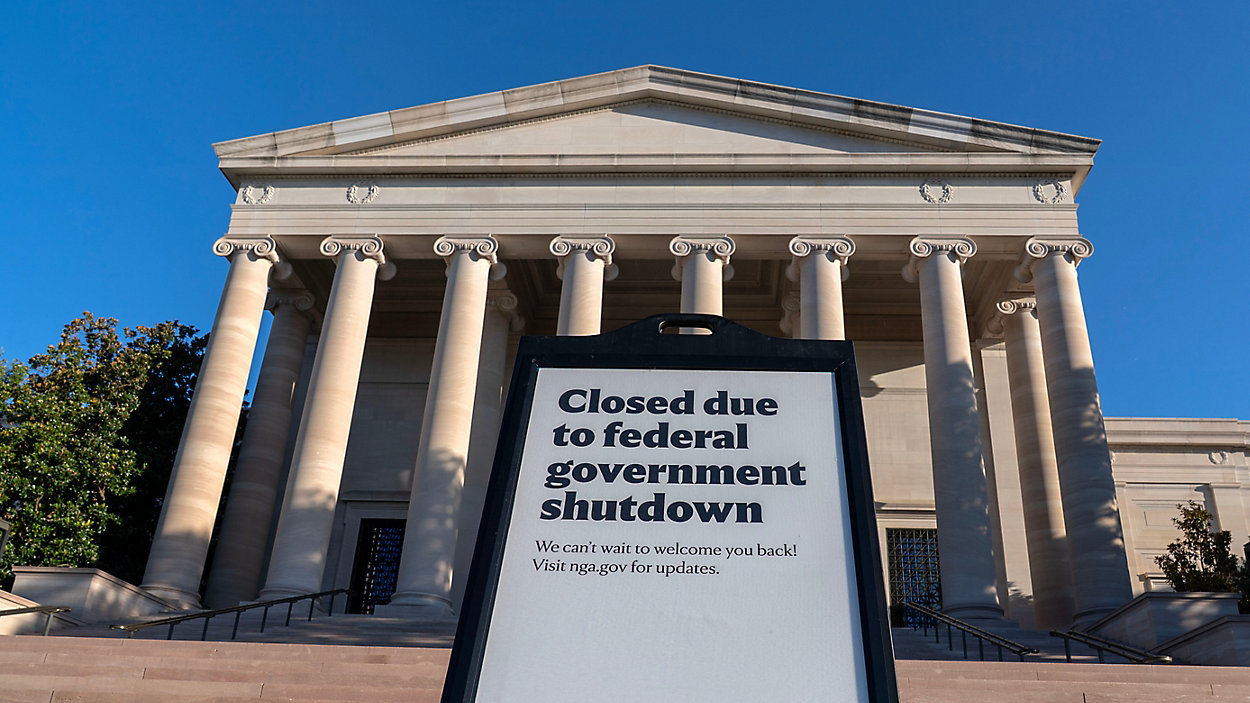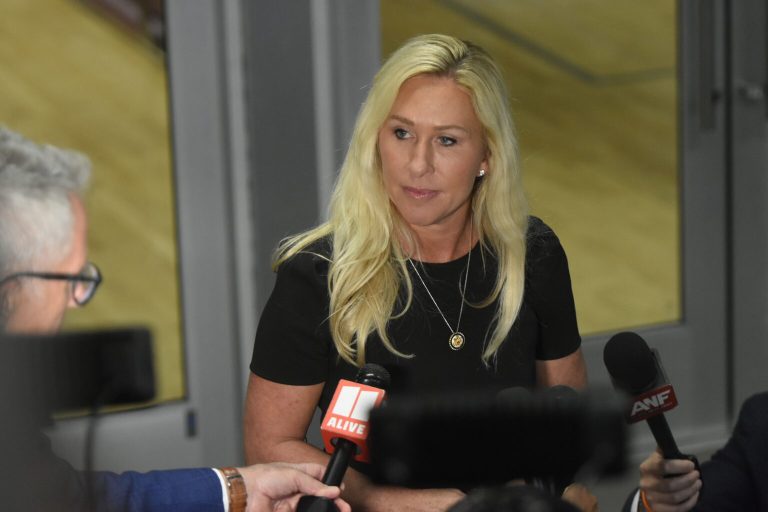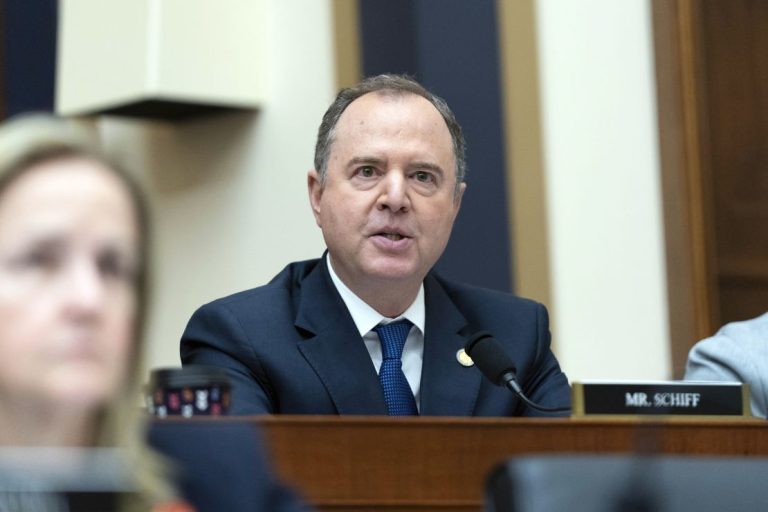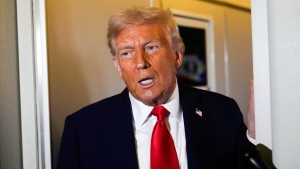The federal government may have reopened after a bruising 43-day shutdown, but the political turmoil surrounding the deal to end it has hardly settled. In fact, the debate that consumed Washington for more than a month may be poised to reignite early next year. The continuing resolution keeping federal agencies funded is set to expire in January, and several lawmakers are already signaling that the ideological rifts left exposed by the shutdown have not healed. Among the most vocal is a Democratic congressman who openly expressed frustration toward his own party’s Senate colleagues and warned that the next funding deadline could trigger yet another intense confrontation.
His candid remarks on national television laid bare the internal divisions that complicated negotiations throughout the shutdown. Although the government is back open and hundreds of thousands of federal workers are finally receiving their pay and returning to their posts, the atmosphere on Capitol Hill remains unsettled. The temporary compromise that reopened federal offices may have merely paused a much deeper conflict over spending priorities, political leverage, and how aggressively each party should negotiate in a divided government.
During a recent interview, the congressman described himself as “furious” with several Democratic senators who he felt had abandoned the party’s position during the final hours of negotiations. In his view, the Senate’s decision to accept a short-term funding deal without securing more concessions represented a missed opportunity. He did not shy away from directing his criticism inward, arguing that the party’s negotiators should have held firm on issues that had broad public support and significant policy importance.
What caught the attention of political analysts, however, was his warning about what could happen when the current continuing resolution expires. He stated that “there may be another opportunity in January,” a phrase that immediately raised concerns that the country could be headed toward another shutdown if lawmakers are unable to reach a broader agreement. His comments did not guarantee that Democrats would use the threat of a shutdown as leverage, but they clearly implied that the January deadline could be used as a pressure point — assuming his colleagues demonstrate the political will to take a harder stance.
The shutdown that just ended was the longest in American history, surpassing the 2018–2019 standoff that itself had been considered an extreme outlier. For more than six weeks, national parks closed, federal agencies halted vital services, military families faced financial uncertainty, and air travel disruptions caused national frustration. With so much disruption fresh in the public memory, the idea that Congress might be only weeks away from another showdown is a reality few Americans want to contemplate.
Still, the political context shows why such warnings are being taken seriously. The recent shutdown was the product of deep disagreement not only between Republicans and Democrats, but also within the parties themselves. Several Democratic lawmakers were pushing for policy priorities they felt should have been non-negotiable, including healthcare-related provisions that would have extended certain insurance subsidies. When these were left out of the final agreement, frustration grew, particularly among House Democrats who believed they had public momentum on their side.
The congressman at the center of this latest controversy emphasized that the previous fight had strong grassroots support. According to him, activists and constituents were urging lawmakers not to accept a deal that lacked meaningful policy gains. He argued that voters were prepared to endure the difficult consequences of a shutdown if it meant securing protections or benefits that would impact millions of Americans in the long term. From his perspective, retreating too quickly betrayed a strategic opportunity that could have yielded more favorable results if Democrats had remained unified.
The January deadline is therefore not simply a date on a calendar. It is a symbolic battleground representing unfinished business, unresolved tension, and divergent strategic philosophies within Congress. Those who believe that Democrats should press harder will view the expiring resolution as a chance to revisit negotiations with greater determination. Others, particularly those wary of the political and economic fallout of another shutdown, are likely to resist the call for confrontation.
It is also important to understand what the temporary agreement actually accomplished. The bill that reopened the government restored pay to more than a million federal workers, including the roughly 650,000 employees who had been furloughed. It provided full-year funding for key areas such as the Departments of Agriculture and Veterans Affairs. At the same time, it postponed broader, more contentious budget decisions until late January, effectively resetting the same conditions that produced the shutdown in the first place.
That reality is not lost on either party’s leadership. House and Senate negotiators know that the same disagreements over healthcare policy, government spending levels, and political messaging remain unresolved. The underlying issues have simply been deferred, not solved. As a result, the warning that another “opportunity” is coming should not be dismissed as political exaggeration. It reflects a genuine possibility — the tensions that drove the shutdown have not disappeared; they have only been paused.
The political climate outside Congress is equally charged. The administration and its allies have been eager to frame the shutdown as a failure of Democratic leadership, arguing that the party allowed the situation to escalate for political reasons. Public statements from administration officials have characterized the shutdown as unnecessary and harmful, placing responsibility on Democratic lawmakers for prolonging the impasse. This messaging suggests that Republicans are preparing for a narrative battle should another shutdown occur, aiming to ensure public opinion lands firmly on their side.
Meanwhile, Democrats continue to debate how aggressively they should approach the next round of negotiations. Some lawmakers share the congressman’s view that party leaders must avoid prematurely conceding to proposals that do not include meaningful policy advancements. Others fear that another prolonged shutdown could badly damage public trust, especially among independent voters frustrated by government dysfunction. The party is clearly not unified in its approach, and this lack of cohesion makes the January deadline even more unpredictable.
What happens next will depend on several interconnected factors: the strength of bipartisan communication over the coming weeks, the willingness of party leadership to adjust strategy, and the extent to which public pressure influences lawmakers’ decisions. If Democrats enter January without a clear internal agreement, the risk of another funding standoff increases significantly. Conversely, if negotiations begin before the final days of the deadline and both parties seek stability heading into the election year, a shutdown could be avoided.
Still, the congressman’s statements cast a long shadow over the coming negotiations. His remarks not only highlighted his frustration with the recent compromise but also challenged his colleagues to reassess their strategic approach. By questioning whether the previous shutdown “stiffened their spine,” he raised doubts about whether the party is prepared to hold the line when the next opportunity arises. This has already sparked discussion among political observers about whether his comments reflect broader dissatisfaction within the caucus or represent an isolated expression of frustration.
Regardless of the internal debate, one truth remains: the reopening of the government is not an ending but an intermission. The same pressures, motivations, and disagreements that drove the 43-day shutdown remain very much alive. And unless Congress finds a way to bridge the ideological gaps that divide it, the clock counting down to January may be ticking toward another confrontation that could once again bring the federal government — and millions of Americans’ lives — to a halt.

Emily Johnson is a critically acclaimed essayist and novelist known for her thought-provoking works centered on feminism, women’s rights, and modern relationships. Born and raised in Portland, Oregon, Emily grew up with a deep love of books, often spending her afternoons at her local library. She went on to study literature and gender studies at UCLA, where she became deeply involved in activism and began publishing essays in campus journals. Her debut essay collection, Voices Unbound, struck a chord with readers nationwide for its fearless exploration of gender dynamics, identity, and the challenges faced by women in contemporary society. Emily later transitioned into fiction, writing novels that balance compelling storytelling with social commentary. Her protagonists are often strong, multidimensional women navigating love, ambition, and the struggles of everyday life, making her a favorite among readers who crave authentic, relatable narratives. Critics praise her ability to merge personal intimacy with universal themes. Off the page, Emily is an advocate for women in publishing, leading workshops that encourage young female writers to embrace their voices. She lives in Seattle with her partner and two rescue cats, where she continues to write, teach, and inspire a new generation of storytellers.









